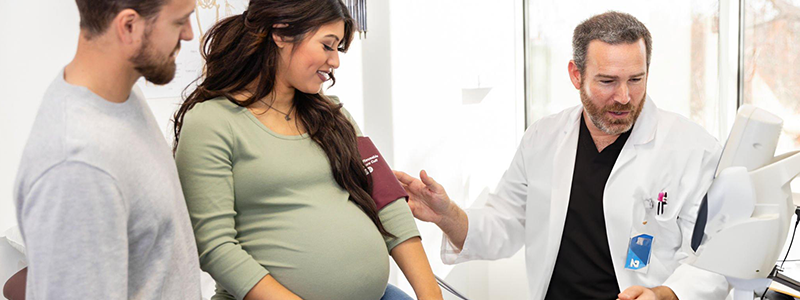Pre-eclampsia is a condition that affects pregnant women and is characterized by elevated blood pressure and damage to organs such as the liver and kidneys. In severe cases, it can progress to eclampsia, a life-threatening condition. This blog will explore the symptoms, treatment options, and prevention strategies related to pre-eclampsia, with a focus on how radiology plays a crucial role in diagnosing and managing this condition.
Understanding Pre-eclampsia and Eclampsia
Pre-eclampsia is a serious condition during pregnancy, marked by high blood pressure, protein in the urine, and symptoms like swelling and vision changes. Eclampsia is a life-threatening complication of pre-eclampsia, causing seizures. Timely management of pre-eclampsia is vital to prevent progression to eclampsia.
Preeclampsia Symptoms and Signs
High Blood Pressure: Elevated blood pressure is a key warning sign of pre-eclampsia, requiring early detection and management to protect both mother and baby.
Proteinuria and Kidney Dysfunction: Proteinuria, the presence of protein in the urine, is a critical indicator of pre-eclampsia, suggesting potential kidney problems and the need for prompt medical attention.
Edema: Edema, or abnormal swelling in the hands, face, and feet, is a common visual symptom of pre-eclampsia, emphasizing the importance of monitoring and diagnosis.
Sudden Weight Gain: Experiencing sudden and excessive weight gain during pregnancy, mainly due to fluid retention, should be closely watched by healthcare providers as it may signal pre-eclampsia.
Vision Changes: A pre-eclampsia warning that is noticed with changes in vision, such as blurriness or seeing spots, can indicate pre-eclampsia and prompt the need for immediate medical attention.
Pre-eclampsia and Eclampsia Treatment
Early Detection is Crucial: Timely identification of pre-eclampsia is paramount to prevent its progression into the more severe eclampsia, which poses life-threatening risks due to seizures.
Managing Blood Pressure: The primary focus of pre-eclampsia treatment is the regulation of blood pressure, as hypertension is a hallmark symptom. Medications and other interventions are often employed to maintain safe levels.
Preventing Complications: Treatment strategies aim to prevent complications that may arise from pre-eclampsia, including damage to vital organs. Regular radiological monitoring is essential to assess organ health and make informed decisions about medical interventions.
Medical Treatment for Preeclampsia
Close Monitoring: Effective management of pre-eclampsia necessitates vigilant monitoring of both the mother and the developing fetus to track the progression of the condition and ensure their well-being.
Delivery in Severe Cases: In severe instances of pre-eclampsia, early delivery of the baby may be required to safeguard the health and safety of both the mother and child. This decision is often made based on the severity of the condition and the gestational age of the fetus.
Prevention of Pre-eclampsia
Healthy Lifestyle Choices: Adopting a healthy lifestyle can reduce the risk of pre-eclampsia. This includes maintaining a balanced diet, staying physically active, managing stress, and avoiding smoking and excessive alcohol consumption.
Recognition of Symptoms: Expectant mothers should be aware of pre-eclampsia symptoms, such as high blood pressure, swelling, vision changes, and sudden weight gain. Recognizing these signs early enables timely medical intervention.
Radiology in the Diagnosis and Management of Pre-eclampsia
Fetal and Maternal Health Monitoring: Radiological techniques like ultrasounds and Doppler studies play a critical role in tracking the well-being of both the fetus and the mother throughout the pregnancy.
Detecting Pre-eclampsia Signs: These imaging tools enable healthcare providers to detect early signs and symptoms of pre-eclampsia, such as abnormalities in the placenta and changes in organ health.
Assessing Blood Flow: Doppler studies are particularly useful in assessing blood flow to vital organs, helping healthcare professionals identify reduced blood flow, a common characteristic of pre-eclampsia.
Edema Identification: Radiological imaging can identify the development of edema, which is a common visual symptom of pre-eclampsia, helping in its early diagnosis and management.
Pre-eclampsia is a serious condition that can pose risks to both expectant mothers and their unborn children. Early recognition of symptoms and timely intervention are critical for ensuring a positive outcome. Radiology plays a vital role in the diagnosis and management of pre-eclampsia, offering valuable insights into the condition’s progression and its impact on maternal and fetal health. By staying informed about the symptoms, seeking regular prenatal care, and leveraging the power of radiological imaging, we can work towards better outcomes for both mothers and their babies.



